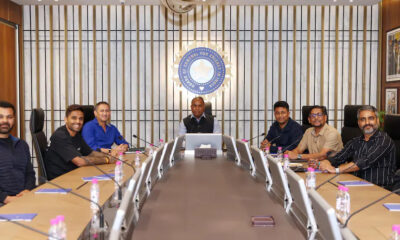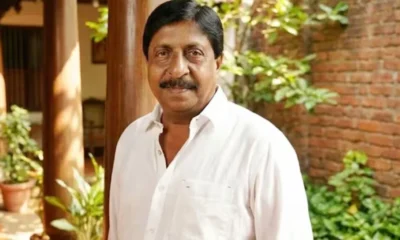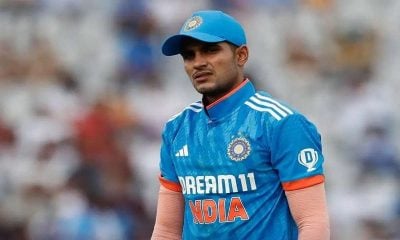Latest Politics News
Rahul Gandhi likely to take over as Congress president on Dec 5
Published
8 years agoon
By

[vc_row][vc_column][vc_column_text]Polling on December 16 but Rahul may be declared chief after scrutiny of nominations on Dec 5 in absence of a challenger, no clarity on role for Sonia Gandhi
After months of dilly-dallying over the timing of the inevitable elevation of Congress vice president Rahul Gandhi to replace his mother Sonia Gandhi as chief of the Grand Old Party, decks were cleared, on Monday, for the heir-apparent to take over the reins of the 131-year-old political party.
On Monday, at a meeting of the extended Congress Working Committee (CWC) – the apex decision making body of the 131-year-old party – that was chaired by Congress president Sonia Gandhi, the party leadership cleared the schedule for the internal elections for the post of Congress president.[/vc_column_text][/vc_column][/vc_row][vc_row][vc_column][vc_raw_html]JTNDYmxvY2txdW90ZSUyMGNsYXNzJTNEJTIydHdpdHRlci10d2VldCUyMiUyMGRhdGEtbGFuZyUzRCUyMmVuJTIyJTNFJTNDcCUyMGxhbmclM0QlMjJlbiUyMiUyMGRpciUzRCUyMmx0ciUyMiUzRUhlcmUlMjBpcyUyMHRoZSUyMHNjaGVkdWxlJTIwZm9yJTIwdGhlJTIwZWxlY3Rpb24lMjBvZiUyMENvbmdyZXNzJTIwUHJlc2lkZW50JTJDJTIwYXMlMjBhcHByb3ZlZCUyMGJ5JTIwdGhlJTIwQ29uZ3Jlc3MlMjBXb3JraW5nJTIwQ29tbWl0dGVlJTIwdG9kYXkuJTIwJTNDYSUyMGhyZWYlM0QlMjJodHRwcyUzQSUyRiUyRnQuY28lMkZNRjQzdHNaWWxZJTIyJTNFcGljLnR3aXR0ZXIuY29tJTJGTUY0M3RzWllsWSUzQyUyRmElM0UlM0MlMkZwJTNFJTI2bWRhc2glM0IlMjBDb25ncmVzcyUyMCUyOCU0MElOQ0luZGlhJTI5JTIwJTNDYSUyMGhyZWYlM0QlMjJodHRwcyUzQSUyRiUyRnR3aXR0ZXIuY29tJTJGSU5DSW5kaWElMkZzdGF0dXMlMkY5MzI1MDUwNDk5ODAyMjM0ODglM0ZyZWZfc3JjJTNEdHdzcmMlMjU1RXRmdyUyMiUzRU5vdmVtYmVyJTIwMjAlMkMlMjAyMDE3JTNDJTJGYSUzRSUzQyUyRmJsb2NrcXVvdGUlM0UlMEElM0NzY3JpcHQlMjBhc3luYyUyMHNyYyUzRCUyMmh0dHBzJTNBJTJGJTJGcGxhdGZvcm0udHdpdHRlci5jb20lMkZ3aWRnZXRzLmpzJTIyJTIwY2hhcnNldCUzRCUyMnV0Zi04JTIyJTNFJTNDJTJGc2NyaXB0JTNF[/vc_raw_html][/vc_column][/vc_row][vc_row][vc_column][vc_column_text]As several Congress leaders claimed anonymously, the elevation of Rahul as the next Congress president, is a foregone conclusion and as such, the election – scheduled forDecember 16 is only a formality – one that in all certainty might not even take place.
According to the election schedule cleared by the CWC, notification for the election of the Congress president will be issued on December 1, the last date for filing nominations for the polls will be December 4 while scrutiny of the nomination papers and declaration of the list of “valid candidates” will take place on the very next day.
Given the sycophancy that is characteristic of the Congress party, which in late former Prime Minister PV Narsimha Rao’s words functions like “a train where the compartments have to be attached to an engine belonging to the Nehru-Gandhi family”, it is certain that no party leader would challenge Rahul in the election.
Sources in the CWC say that in the absence of a challenger the Nehru-Gandhi scion could be declared elected as the Congress president on December 5 itself. The other possibility is that the party may make the announcement on December 11, which the CWC has declared as the date for publication of the final list of contesting candidates.
However, considering that the party leadership seems to believe that elevating Rahul as Congress president days before the first phase of polling for the Gujarat Assembly (onDecember 9) could give the Grand Old Party’s campaign in the state some added heft, it is likely that the result for this faux election will be declared in December 5 and notDecember 11.
A senior party leader told APNLive that while election rules “make it necessary for declaring date of polling and date of counting, neither of these dates is likely to come into play as we expect Rahul to be elected to the Congress president’s post unanimously… this can be done immediately after the scrutiny of nomination papers”.
Central office bearers of the party, delegates from different states and union territories, state unit chiefs, party MPs and legislators are expected to cast their votes in the election which would have over 8000 partymen constituting the electoral college.
The election for the Congress president has, since 1998, largely been a formality – one that is carried out only to unanimously endorse Sonia Gandhi as the party chief.
In fact, in the past 70 years the Congress leadership has constantly avoided a full-fledged election for the post of the party president and hoped to elect a leader through “consensus” in order to avoid the impression that the leadership doesn’t enjoy the unquestioned support of all Congressmen and factions that often fight against each other at the state-level.
The exception to this “election by consensus” was last witnessed on November 12, 2000 when party veteran Jitendra Prasada decided to challenge Sonia Gandhi but ended up facing a humiliating defeat. Prasada, a Congress war-horse and six-time MP who hailed from Shahjahanpur in Uttar Pradesh had managed to secure only 94 votes in his favour in the election while Sonia Gandhi – who had then joined active politics less than a year ago – had won 7448 votes of her party delegates. Sonia has, since being nominated party president in 1997 and then elected to the post in 2000, held the office for 199 years, becoming the longest serving president of the 131-year-old party.
The other occasion when the Congress saw an election for the post of party chief was in July 1997 when veteran Sitaram Kesri trounced heavyweights like Sharad Pawar (then a Congress leader) and Rajesh Pilot. Pawar and Pilot had decided to contest the polls against Kesri despite efforts by several Congress leaders to avoid an election.
However, as Congress leaders point out, Rahul’s election is unlikely to see him pitted against any other candidate.
It is not immediately clear as to what role Sonia Gandhi will be offered within the party once her son takes over the mantle of the Congress president. The Congress constitution has no provision for appointing a person as ‘patron’, ‘guiding light’ or ‘mentor’ for the party. Senior Congress leaders say that the CWC could, following Rahul’s elevation, meet to amend the party constitution and carve out a designation that “befitting of Sonia Gandhi”.
Introducing a designation in the party constitution is not a move without precedent in the Congress party. In fact, even the post of Congress vice president – the one that Rahul currently holds – was not part of the original Congress constitution but was added in the late 1980s at the insistence of Rajiv Gandhi to accommodate Arjun Singh. Following Rajiv Gandhi’s assassination in 1991 and Arjun Singh’s return to a ministerial role in the Narsimha Rao government, the post of vice president was left unoccupied till 1997 when Sitaram Kesri revived it to accommodate Jitendra Prasada. Prasada had helped Kesri defeat Pilot and Pawar in the election for the party chief’s post.
Congress leaders say that owing to her poor health, Sonia has already passed on the responsibility of taking most crucial decisions on behalf of the party to her son. While the party leadership would certainly want Sonia to carry on her association with the party’s functioning in some capacity – especially to oversee the transition from her ‘Old Guard’ to Rahul’s ‘New Guard’ – it is expected that an announcement on her new role will take place only after her son’s appointment as party chief is formalised.[/vc_column_text][/vc_column][/vc_row]
You may like
-
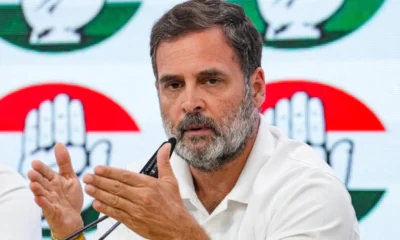

Rahul Gandhi attacks G RAM G bill, says move against villages and states
-
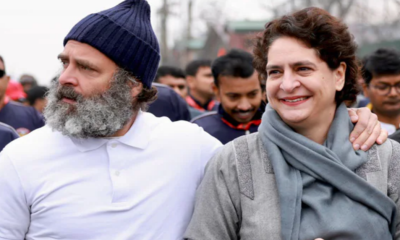

BJP minister claims rift between Rahul and Priyanka Gandhi over Parliament speeches
-
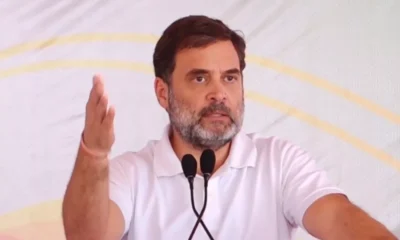

Rahul Gandhi Attacks Centre over G RAM G bill, calls it an attack on MGNREGA’s core principles
-
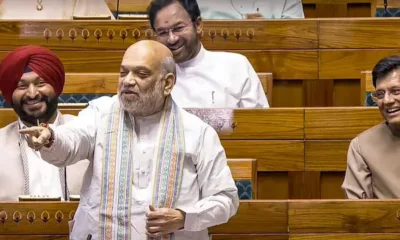

Amit Shah, Rahul Gandhi clash in Lok Sabha as debate on electoral reforms turns heated
-
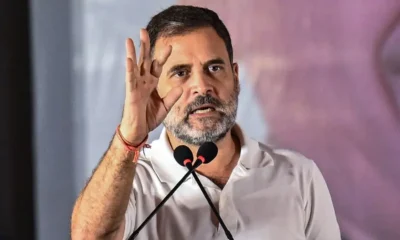

BJP targets Rahul Gandhi over Berlin visit during Winter Session, Congress hits back
-
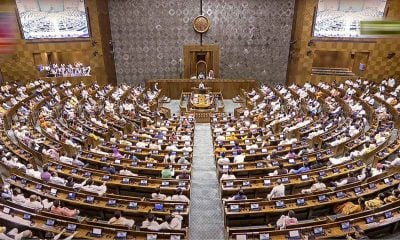

Lok Sabha set for 10-hour debate on electoral reforms today
India News
Renaming MGNREGA removes core spirit of rural employment law, says Shashi Tharoor
Published
2 days agoon
December 19, 2025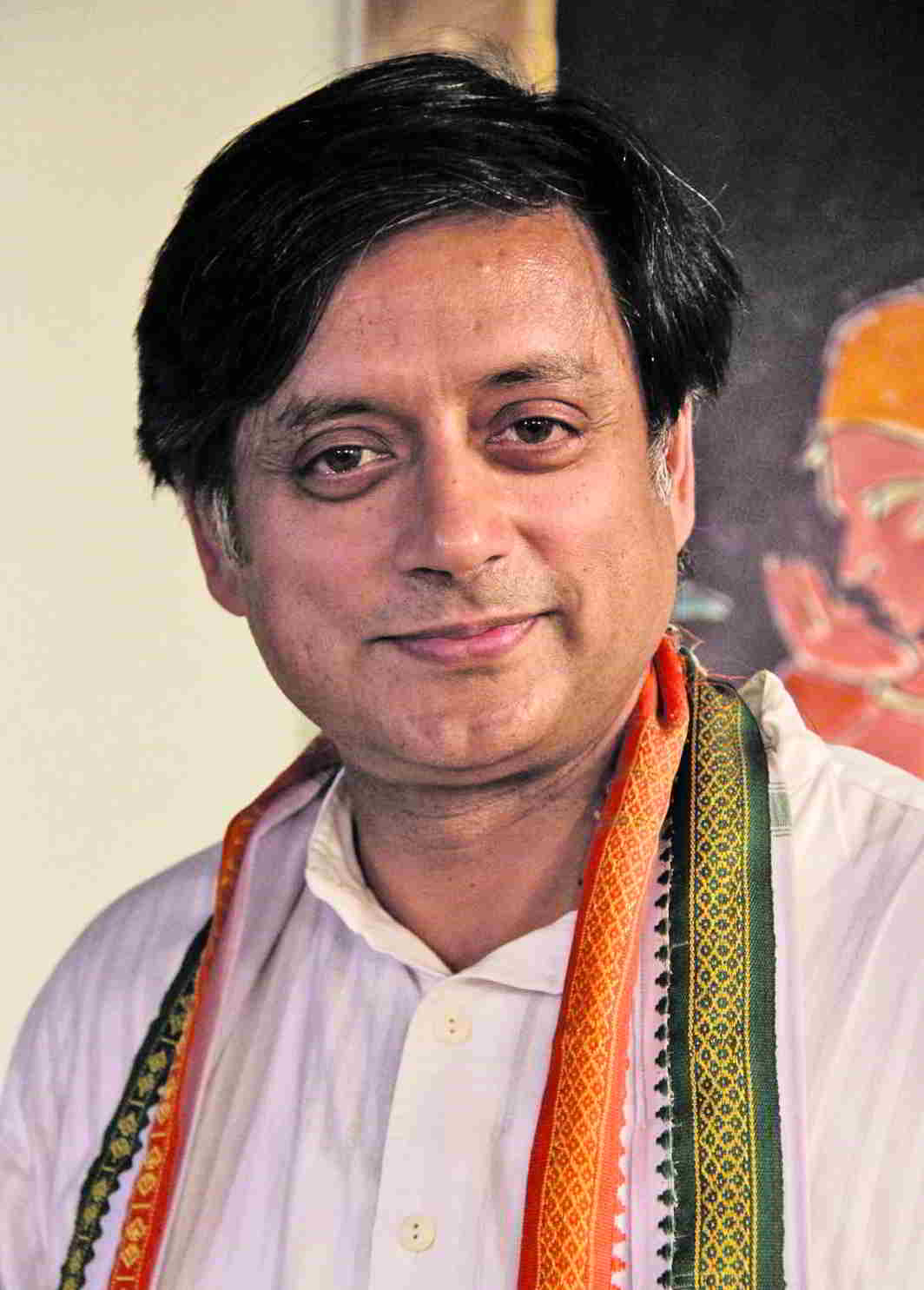
Congress MP Shashi Tharoor has strongly criticised the renaming of the Mahatma Gandhi National Rural Employment Guarantee Act (MGNREGA), saying the move strips the rural employment programme of its core essence. His remarks came after Parliament cleared the Viksit Bharat Guarantee for Rozgar and Ajeevika Mission (Gramin) Bill, also referred to as the VB-G RAM G Bill.
Speaking to media, Tharoor said the decision to remove Mahatma Gandhi’s name from the scheme “takes out the heart” of the rural employment programme that has been in place for years. He noted that the identity and philosophy associated with Mahatma Gandhi were central to the original law.
Tharoor also objected to the way the new name was framed, arguing that it unnecessarily combined multiple languages. He pointed out that the Constitution envisages the use of one language in legislation, while the Bill’s title mixes English and Hindi terms such as “Guarantee”, “Rozgar” and “Ajeevika”, along with the conjunction “and”.
‘Disrespect to both names’
The Congress leader said that inserting the word “Ram” while dropping Mahatma Gandhi’s name amounted to disrespecting both. Referring to Mahatma Gandhi’s ideas, Tharoor said that for Gandhi, the concepts of Gram Swaraj and Ram Rajya were inseparable, and removing his name from a rural employment law went against that vision.
He added that the name of Lord Ram could be used in many contexts, but questioned the rationale behind excluding Mahatma Gandhi from a programme closely linked to his philosophy of village self-rule.
Protests over passage of the Bill
The VB-G RAM G Bill was passed by the Lok Sabha on December 18 and cleared by the Rajya Sabha in the early hours of December 19 amid protests from Opposition members. Several MPs opposed the manner in which the legislation was pushed through, with scenes of sloganeering and tearing of papers in the House.
Outside Parliament, members of the Trinamool Congress staged a sit-in protest near Samvidhan Sadan against the passage of the Bill. Congress also announced nationwide protests earlier this week, accusing the government of weakening rights-based welfare schemes.
Despite opposition criticism, the government has maintained that the new law will strengthen rural employment and livelihood security. The Bill raises the guaranteed employment from 100 days to 125 days per rural household and outlines a 60:40 cost-sharing formula between the Centre and states, with a higher central share for northeastern, Himalayan states and certain Union Territories.
India News
Rahul Gandhi attacks G RAM G bill, says move against villages and states
Rahul Gandhi has criticised the G RAM G bill cleared by Parliament, alleging it dilutes the rights-based structure of MGNREGA and centralises control over rural employment.
Published
2 days agoon
December 19, 2025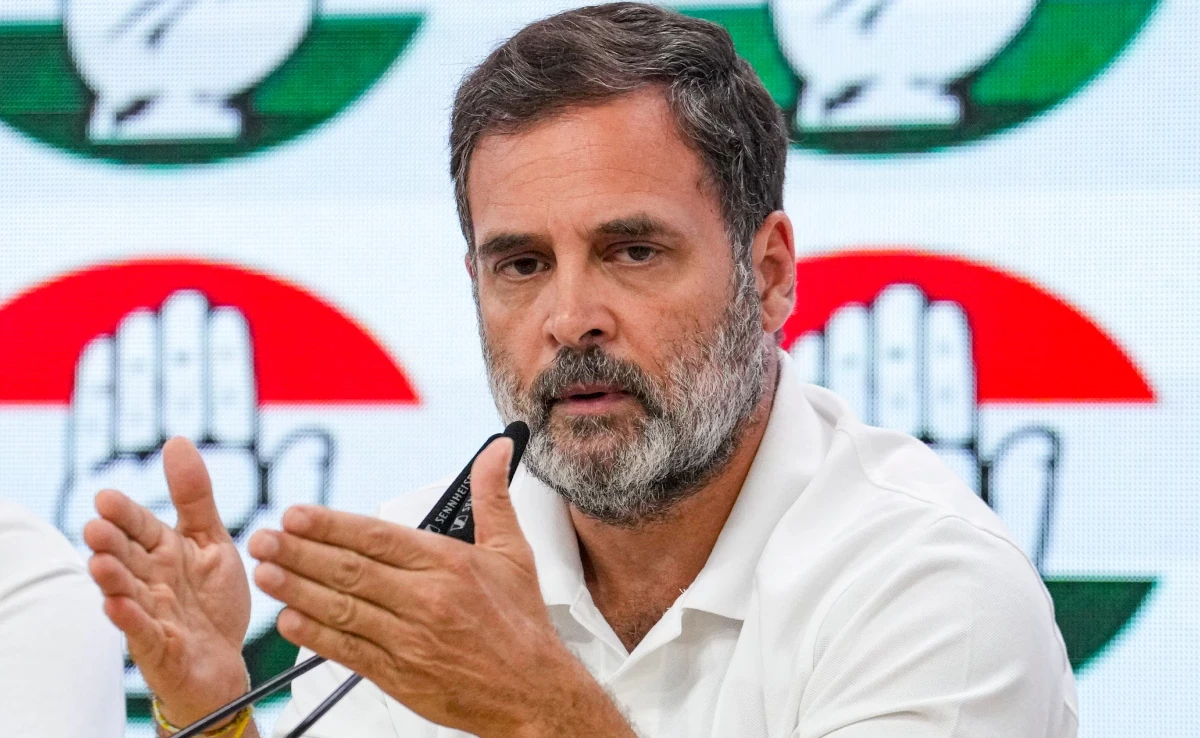
Leader of the Opposition Rahul Gandhi has launched a sharp attack on the Modi government after Parliament cleared the Viksit Bharat Guarantee for Employment and Livelihood Mission (Rural) Bill, commonly referred to as the ‘G RAM G’ bill. He described the proposed law as “anti-state” and “anti-village”, arguing that it weakens the core spirit of the Mahatma Gandhi National Rural Employment Guarantee Act (MGNREGA).
The new legislation, which is positioned as an updated version of MGNREGA, was passed amid protests by opposition parties and is expected to replace the existing scheme once it receives presidential assent.
‘Bulldozed without scrutiny’, says Rahul Gandhi
Rahul Gandhi criticised the manner in which the bill was cleared, saying it was pushed through Parliament without adequate debate or examination. He pointed out that the opposition’s demand to refer the bill to a standing committee was rejected.
According to him, any law that fundamentally alters the rural employment framework and affects crores of workers should undergo detailed scrutiny, expert consultation and public hearings before approval.
Claim of dilution of rights-based guarantee
Targeting the central government, the Congress leader said the proposed law dismantles the rights-based and demand-driven nature of MGNREGA and replaces it with a rationed system controlled from Delhi. He argued that this shift undermines the autonomy of states and villages.
Rahul Gandhi alleged that the intent behind the move is to centralise power and weaken labour, particularly impacting rural communities such as Dalits, OBCs and Adivasis.
Defence of MGNREGA’s impact
Highlighting the role of MGNREGA, Gandhi said the scheme provided rural workers with bargaining power, reduced distress migration and improved wages and working conditions, while also contributing to rural infrastructure development.
He also recalled the role of MGNREGA during the Covid period, stating that it prevented crores of people from slipping into hunger and debt. According to him, any rationing of a jobs programme first affects women, landless workers and the poorest communities.
Opposition to name change and provisions
The Congress has also objected to the renaming of the scheme, accusing the government of attempting to erase the legacy associated with Mahatma Gandhi. Opposition MPs staged a dharna within the Parliament complex, questioning provisions of the bill that they claim dilute the “soul and spirit” of the original law enacted in 2005.
Under MGNREGA, the government guaranteed 100 days of work in rural areas along with an unemployment allowance if work was not provided. The ‘G RAM G’ bill proposes to raise the guaranteed workdays to 125, while retaining other provisions. However, critics have flagged concerns over employment being linked to pre-approved plans.
The bill was cleared after a midnight voice vote in the Rajya Sabha, following its passage in the Lok Sabha amid protests and walkouts. It will become law once approved by the President.
India News
AAP dominates Punjab zila parishad polls, leads in most panchayat samiti zones
AAP has won 201 out of 317 declared zila parishad zones in Punjab so far and is leading in a majority of panchayat samiti seats, with counting still underway.
Published
3 days agoon
December 18, 2025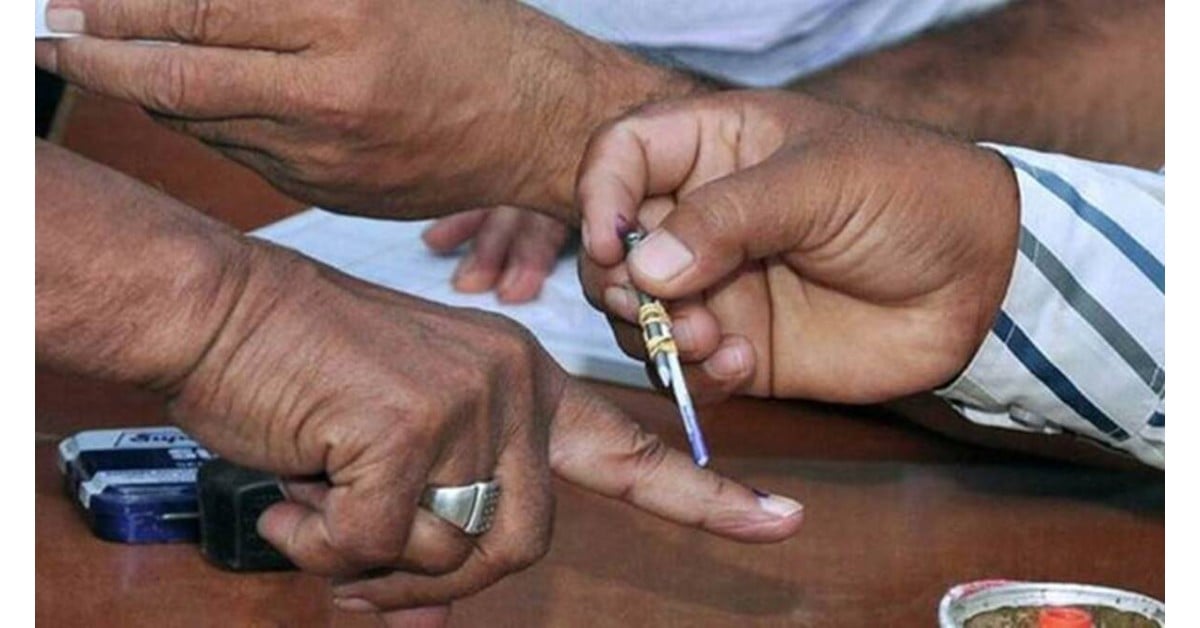
The ruling Aam Aadmi Party (AAP) has recorded a strong performance in the Punjab zila parishad elections and is leading in the majority of panchayat samiti zones, as per results declared so far on Thursday. The counting process is still underway and complete results are awaited, officials said.
Polling for the rural local bodies was held on December 14 to elect representatives across 347 zones of 22 zila parishads and 2,838 zones of 153 panchayat samitis in the state.
AAP secures clear edge in zila parishads
According to the available results, outcomes have been declared for 317 zila parishad zones so far. Of these, the AAP has won 201 zones, placing it well ahead of other parties.
The Congress emerged second with victories in 60 zones, followed by the Shiromani Akali Dal (SAD) with 39 zones. The BJP won four zones, the BSP secured three, while independents claimed 10 zones.
District-wise data shows that the AAP won 22 zones in Hoshiarpur, 19 each in Amritsar and Patiala, 17 each in Tarn Taran and Gurdaspur, and 15 zones in Sangrur. The Congress registered its best performances in Gurdaspur and Ludhiana with eight zones each, followed by Jalandhar with seven zones. The SAD performed strongly in Bathinda with 13 zones, while the BJP managed to win four zones in Pathankot.
AAP leads in panchayat samiti results
In the panchayat samiti elections, trends declared so far indicate that the AAP is leading in a majority of zones. However, officials clarified that counting is ongoing and the final picture will be clear only after all ballot papers are tallied.
Kejriwal, Mann reject opposition allegations
Reacting to the trends, AAP supremo Arvind Kejriwal said the party’s performance reflected strong rural support for the Bhagwant Mann government’s work. Addressing the media in Mohali along with Chief Minister Bhagwant Mann, Kejriwal dismissed allegations of irregularities raised by opposition parties.
He said the elections were conducted in a fair and free manner and claimed that the results so far showed a clear wave in favour of the AAP in rural Punjab. Kejriwal stated that nearly 70 per cent of the zila parishad and panchayat samiti seats had gone in favour of the party.
Congress, SAD question poll conduct
The Congress and the Shiromani Akali Dal, however, accused the ruling party of misusing official machinery. Punjab Congress chief Amrinder Singh Raja Warring alleged that the AAP had “stolen” the rural mandate and claimed that the results did not reflect genuine public support.
Opposition parties had earlier also accused the AAP government of high-handedness during the polling process, allegations that the ruling party has strongly denied.

India announces T20 World Cup 2026 squad, Shubman Gill dropped as Axar Patel named vice-captain

Veteran Malayalam actor and filmmaker Sreenivasan passes away at 69

T20 World Cup 2026: Selectors weigh Shubman Gill role as India squad announcement awaited

Thick smog engulfs Delhi, flights and trains delayed as air quality slips to very poor



